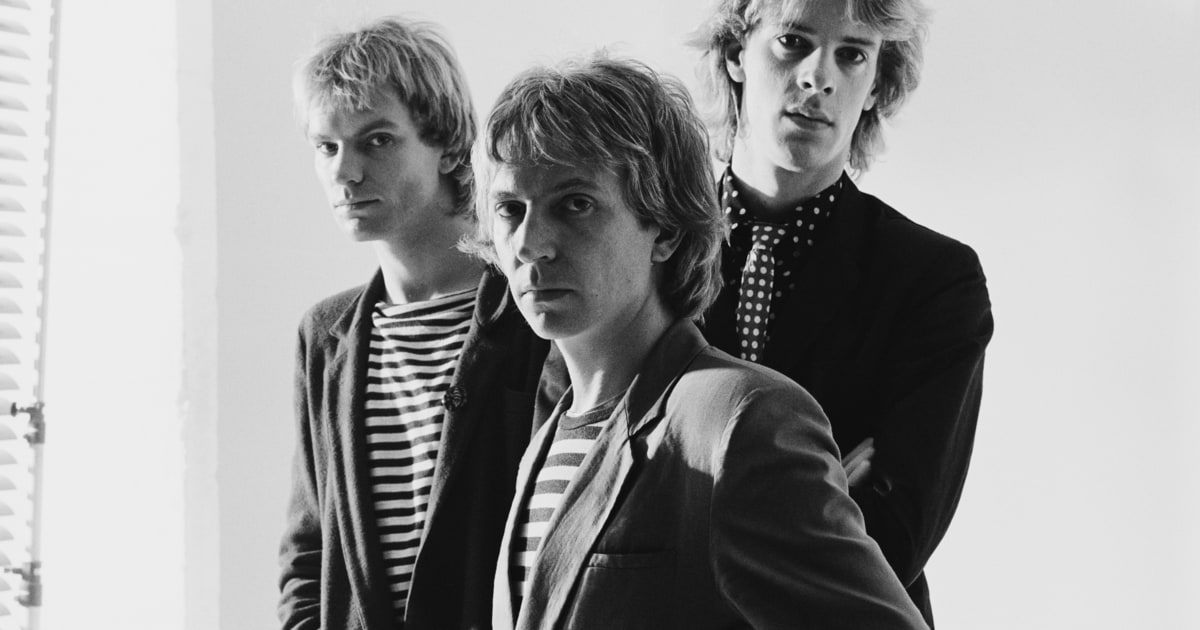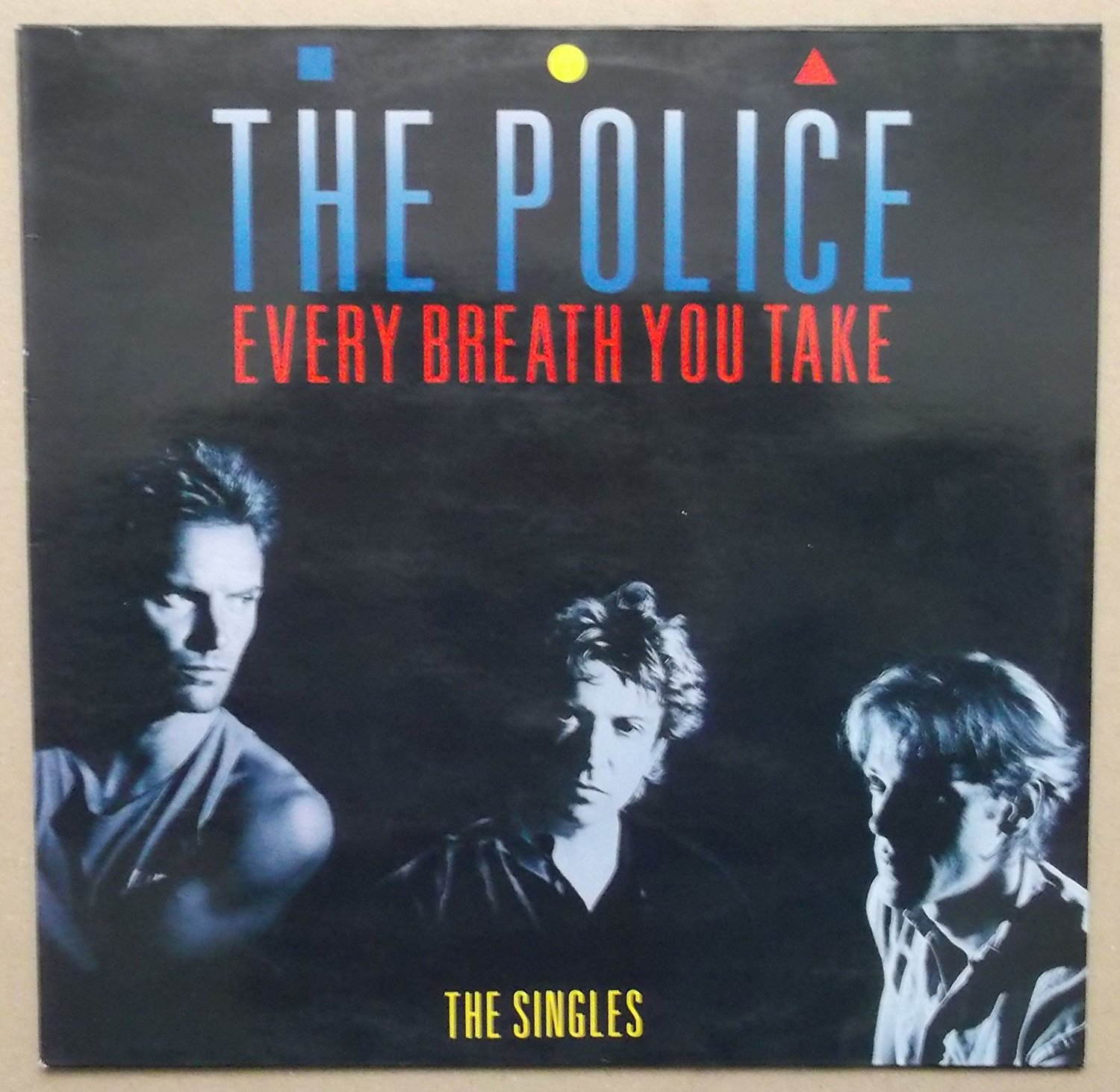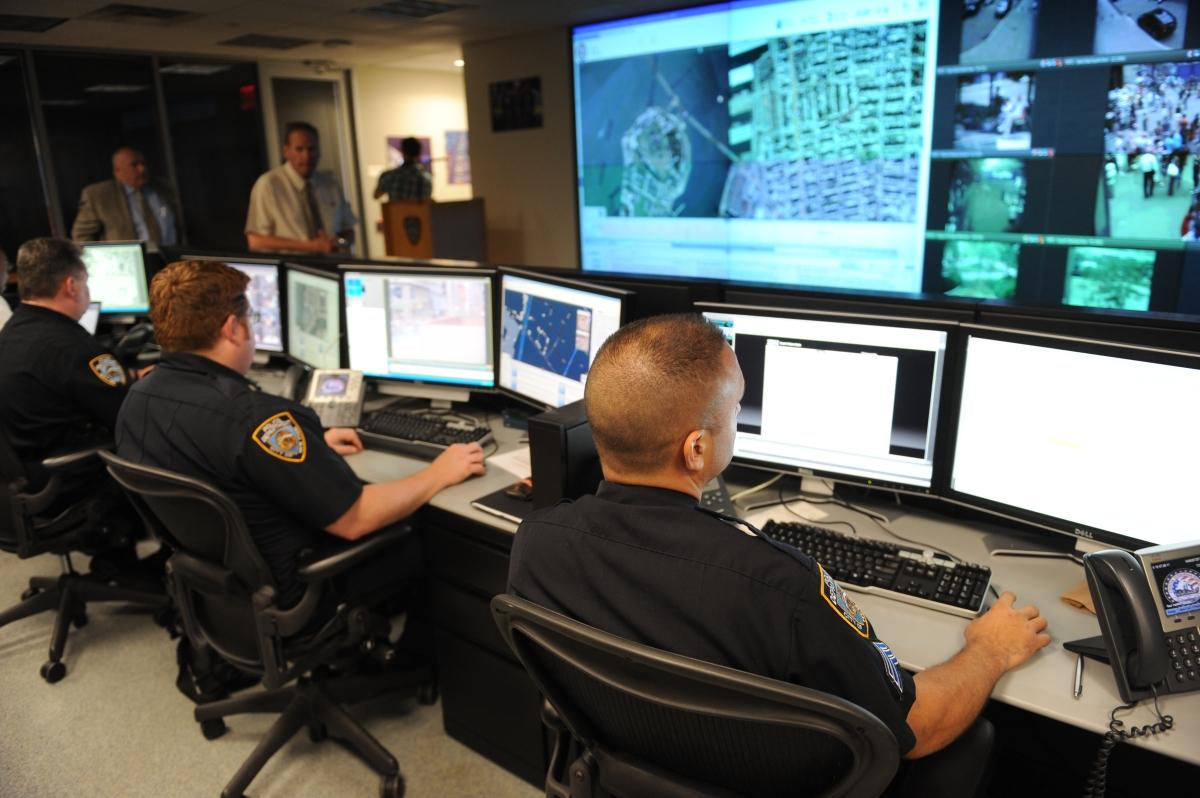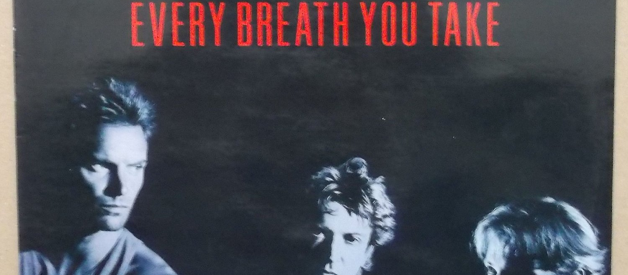This song isn?t just an ordinary love song, it?s about the surveillance technology that has generated confusion and fuzziness.
The popular song, ?Every Breath You Take?, sung by the rock band the Police, is a love song, but it?s more of a protest against the intrusiveness of surveillance technology. It was a big hit in 1983 after being ranked the most-heard song in the U.S for eight weeks. The song contains the lines that are very peculiar and compelling, which intrigues us in a very unorthodox and cathartic way. It is misinterpreted since it is more excessively depicting the obsessive stalker, rather than a love song. You may rethink after having a look at the composition of the lyrics:
 Sting, Andy Summes and Stewart Copeland of the Police. (Fin Costello/Getty)
Sting, Andy Summes and Stewart Copeland of the Police. (Fin Costello/Getty)
Every breath you take (breath analyzer)
Every move you make (motion detector)
Every bond you break (polygraph)
Every step you take (electronic anklet)
Every single day (continuous monitoring)
Every word you say (bugs, wiretaps, mikes)
Every night you stay (light amplifier)
Every vow you break (voice stress analysis)
Every smile you fake (brain wave analysis)
Every claim you make (computer matching)
I?ll be watching you (video surveillance)

?Every Breath You Take?, was written by Sting after separating from his first wife, Frances Tomelty. Regardless of being misinterpreted, the song can be fairly understood as containing the illustrious combination of several widely used techniques of the surveillance technology. This new ?softer? form of social control deliberately tends to be subtle, invisible, scattered, and involuntary. Beyond the tactical and strategical questions, in any given investigation, justice is primarily prioritized as the leading objective of every efforts in surveillance policing. The consideration of subtle and deep-lying shift in the nature of American social control, or generally the scope of social control in Western democracies, has become technical and specialized in may ways.
Gary T. Marx, a sociologist and Professor Emeritus of the Massachusetts Institute of Technology (MIT), is probably the one who discovered and provided an insightful interpretation of ?Every Breath You Take? that is linked with surveillance, in his book Undercover: Police Surveillance in America. For years, he has been working on surveillance issues, illustrating how and why surveillance is neither good nor bad, but context and comportment make it so. He has sought to form a conceptual map of new ways of collecting, analyzing, communicating and using personal information.
 Expansion of New York City?s surveillance camera network (Roca John, New York Daily News)
Expansion of New York City?s surveillance camera network (Roca John, New York Daily News)
The privileging of institutional actors like the police was importantly prominent in contributing the transmutation of surveillance technology and the extension of its scope in social control, encouraged the development of analytic frames that tried account for the political conditions that fuel CCTV implementation, as well as for the motivations and intentions of those behind the cameras. As a matter of fact, there is an anomaly about the changing nature of surveillance, that different forms of surveillance could be positioned along a spectrum from ?care? ?control?, from watching over one for purposes of protection to scrutinizing one behavior in order to enforce discipline, respectively. This was a major issue that it called upon scholars to eschew simplistic critiques of surveillance as inherent negative, rather, evaluations of surveillance would have to be made on a case-by-case basis, admitting the reality that complexity of surveillance and it often operates simultaneously in both of these registers (care and control).
Surveillance technology certainly reduced the distancing both socially and geographically between the watchers and the watched. Miniaturization and remote control increase the difficulty of discovery. Surveillance devices can either be made to appear as something else, that can be ordinary, presumptively harmless, and less detectable (one-way mirrors, cameras hidden in a fire extinguisher, undercover agents), or can be virtually invisible (electronic snooping into the microwave transmission or computer files. This set of techniques in implementing surveillance devices contrasts with traditional wiretapping, in which changes in electrical currents are clues to the presence of the tap, but even when a wire is used, they might be unrecognizable.
To examine the popularity if surveillance in popular culture, ?Every Breath You Take? of the Police, is surely part of the largely extensive tendency of studying surveillance in popular culture. In any way, there are many possible avenues for studying surveillance as part of cultural practice. The creation and study of artistic interventions are absolutely fruitful, as they contribute imaginative resources that would channel latent concerns and anticipatory events in a near future that ordinary scientists would have a difficulty of envisioning without deviating from disciplinary. The demonstration of surveillance in popular provides a fascinating accumulation of ideas, that can be tremendous inspirational sources for us to comprehend the conundrum of surveillance. Artistic works or performances can help individuals visualizing the description of how they depict the simulation of mass surveillance into real-world reality. Cultural products illustrate a physical manifestation, consciously or unconsciously, which enroll others as witnesses or actors, can also serve as vital agents in the process of social change. Given by the hauntingly tantalizing and harrowing image of a mass surveillance state in George Orwell?s Nineteen Eighty-Four, surveillance has become a loose conversation, a central platform luring creative minds of artists, fiction writers, and filmmakers to design the spectrum of surveillance in a variety of options. It sounds unorthodox and iconoclastic to claim that we love being watched, to put it radically, the uses of surveillance in art, performance and popular culture indicate the ostentatious world where we have too much to gain from the experience of being watched.
By having a serious treatment of artistic works, the popular culture, in general, presents abundant material for explorations of surveillance in societies. John McGrath?s book Loving Big Brother: Performance, Privacy and Surveillance Space, might be another exemplary case of studying the subject of surveillance in popular culture, which interrogates how people use and understand surveillance systems and how television shows and movies contribute to cultural imaginaries. The field is rapidly coming to grips with cultural practices in this sense and working to theorize them in connection with broader political economies. Some of the works being done in these directions includes research on general interactive media, social networking, games, cell phones, and television.
It is clear that every single individual is a creative actor, engages in the production of creativity, constantly draws upon and reproduces cultural knowledge. As a matter of fact, the bulk of everyday life is embedded with series of unplanned and unexpected events without knowingly to realize, that everyday life is constantly compromised by the occurrence of these uninvited events on micro-levels of human interaction, below the level of conscious awareness or intentionality. As society is becoming more dossier, self-monitored and more engineered, the technological systems are clearly integral to cultural practice and important components of modern myth and ritual. In similarity with other technologies, surveillance systems attain as negotiated components of culture and accrete meaning by tapping culture?s immense symbolic reservoirs, which can include media, art and other things.
Given by the availability and expansion of social networks, the automated face recognition system invites users of Facebook, iPhoto, Picasa and many other application to identify the people within the digital photo libraries by training these programs to link names with faces, according to the list of your contacts or friend lists. This example may serve as a mechanism of enrolling users in their own exploitation as they willingly or unconsciously volunteer to generate these private data for the benefit of industry and government organizations.
It might be obscure to begin from a position to presume people are dupes and they simply do not understand the situations as clearly as do intellectual scientists. By looking at media discourses and investigation of the role of surveillance in public knowledge and debate, the media have been long recognized for triggering the moral panics and circulating misleading information about public threat, which has been well-documented and frequently discussed concerning terrorism and national security. In the examination of surveillance on media, the expansion of conceptual categories to take seriously the discursive engine propels the meaning-making practices about surveillance. What has been missing in the interpretation and demonstration of surveillance on media, is the enunciative dimension. The absence of enunciation can fairly be understood as drawing the consequential outcome of mistreatment and marginalization of surveillance. In terms of the importance of linguistic elements, an enunciative dimension of surveillance must always be grasped in local contexts, which motivates scholars to confront cultural, geographic and other differences, and must be suspicious and questioned about the grand generalization of the role of surveillance. Perhaps considering the possibility of having a mass surveillance society, it forces us to view it as something singular or monolithic.
The prospect of surveillance in popular culture opens a path to the construction and symbolic interrelation that shape quotidian meaning, on the other hand, and path operates as powerful truth constructs ideology and policy. The interaction with surveillance themed films, novels, photographs, plays, installation of somekind, and indeed song, indicates that some artists have made explicit forays into the studies of surveillance. This trend develops the notion of surveillance space, in which somewhere between public and private, it is a place for us beginning to understand the intricacy of surveillance.


